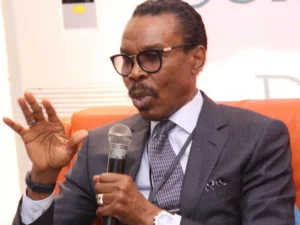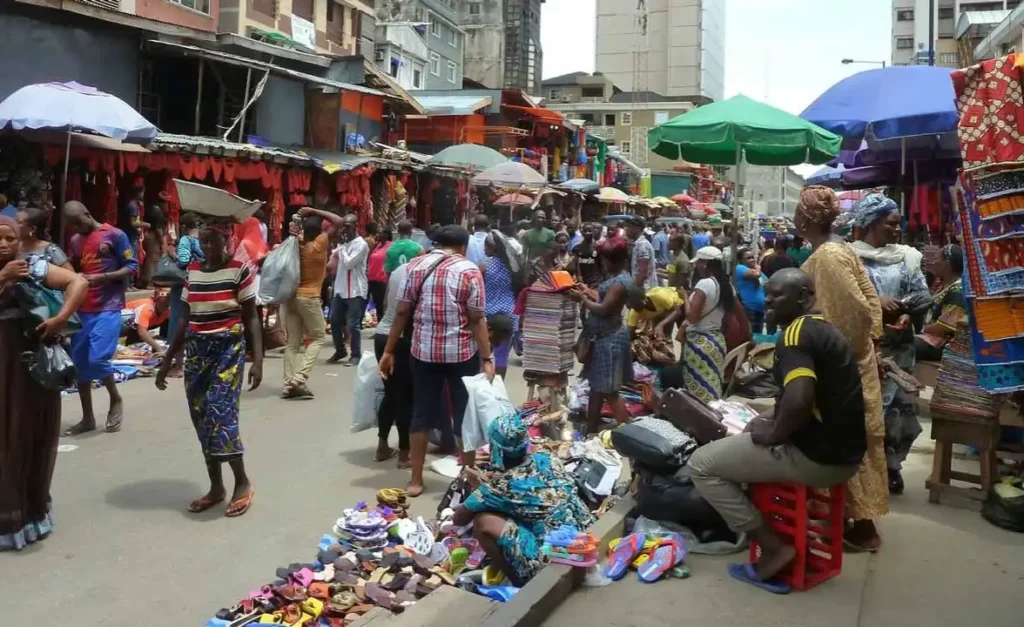Renowned economist Bismarck Rewane forecasts Nigeria’s GDP will climb to approximately $400 billion by 2026, driven by sustained average annual growth of 3.5%. This pace would elevate Nigeria to the rank of the second-largest economy in Sub‑Saharan Africa, reflecting both scale and resilience in its recovery trajectory.
Strengthening Reserves and Forex Stability
He anticipates central bank reserves will rise to around $20 billion in unencumbered liquidity, underpinned by reforms to the foreign exchange auction system, rising diaspora remittances, and improved export receipts. This reserve buildup aims to stabilize the naira and dampen exchange rate volatility—crucial to improving business confidence and fiscal stability.

Inflation Cooling and Lower Interest Rates
Rewane projects headline inflation easing from more than 30% in 2024 down to about 22% by 2026. Simultaneously, the benchmark lending rate (MPR) is expected to fall to roughly 20%, reducing funding costs for businesses and households and helping lower non-performing loan rates in the banking sector.
Exchange Rate Trends and Productivity Gains
Despite positive reforms, the parallel-market naira rate may still linger around ₦1,550 per dollar by 2026 due to informal forex flows, diaspora transfers, and central bank interventions. On the productivity front, total factor productivity is expected to rise gradually—from 2.4% to 2.6%—while the trade surplus could expand toward $9.3 billion.
Energy Market Outlook and Commodity Pricing
Rewane anticipates stable petrol pricing near ₦900 per litre, thanks to increased output from large refineries and expanded modular capacity. He also projects staple commodity prices by 2026 as follows: tomatoes at ₦20,000 per basket, rice at ₦75,000 per bag, and beans at ₦110,000 per bag, reflecting continued cost pressures amid gradual cost recovery.
Capital Markets Expansion
Nigeria’s equity markets could benefit from growing investor optimism, with market capitalisation expected to rise to nearly ₦58 trillion. Rewane cites upcoming public listings—including major corporations and infrastructure-linked companies—as key to deepening capital access and liquidity.
Underlying Policy Framework and Reform Drivers
He credits the forecasted gains to better fiscal discipline, increased revenue mobilisation, exchange rate liberalisation, and proactive economic reforms. The steady growth in tax-to-GDP ratios and revenue inflows into reserves signal improving governance and policy traction.
Skeptical Views Highlight Implementation Risks
Some policymakers and fiscal experts warn that Nigeria must manage structural impediments to reach these targets. Concerns include persistent unemployment, educational gaps, weak infrastructure, and governance barriers. Rewane’s scenario assumes that reforms progress steadily and effectively, acknowledging that missteps could limit growth potential.
Tracking Progress Toward 2026 Objectives
To reach the $400 billion target, Nigeria must navigate critical milestones:
-
Maintain a 3.5% real growth trend, supported by industrial and services expansion
-
Build and protect $20 billion in reserves, shielding the economy from external shocks
-
Manage inflation down to 22% through energy pricing and monetary controls
-
Keep parallel-market FX rates manageable to preserve import affordability
-
Support productivity improvements through infrastructure, digitalisation, and education
-
Bolster capital markets by supporting IPOs and investor transparency
Summary of Forecasted Indicators by 2026
| Indicator | Projected Level |
|---|---|
| GDP | ~$400 billion |
| Annual Growth | ~3.5% |
| Foreign Reserves | ~$20 billion |
| Inflation (Headline) | ~22% |
| Benchmark Lending Rate (MPR) | ~20% |
| Parallel FX Rate | ~₦1,550 / $1 |
| Trade Surplus | ~$9.3 billion |
| Productivity Growth | ~2.6% |
| Stock Market Cap | ~₦58 trillion |
| Petroleum Price | ₦900 per litre |
| Commodity Prices | Tomatoes ₦20k, Rice ₦75k, Beans ₦110k |
Conclusion
Rewane’s outlook offers a compelling yet cautious roadmap: steady real growth, controlled inflation, rising reserves, and expanding capital markets. While the macroeconomic forecast is optimistic, it depends on reliable policy execution, structural reform continuity, and external conditions.
If Nigeria can implement these strategies effectively, it could emerge as a more stable, diversified, and competitive economy by 2026. Let me know your next headline—I’ll produce another in this same detailed, polished format.






